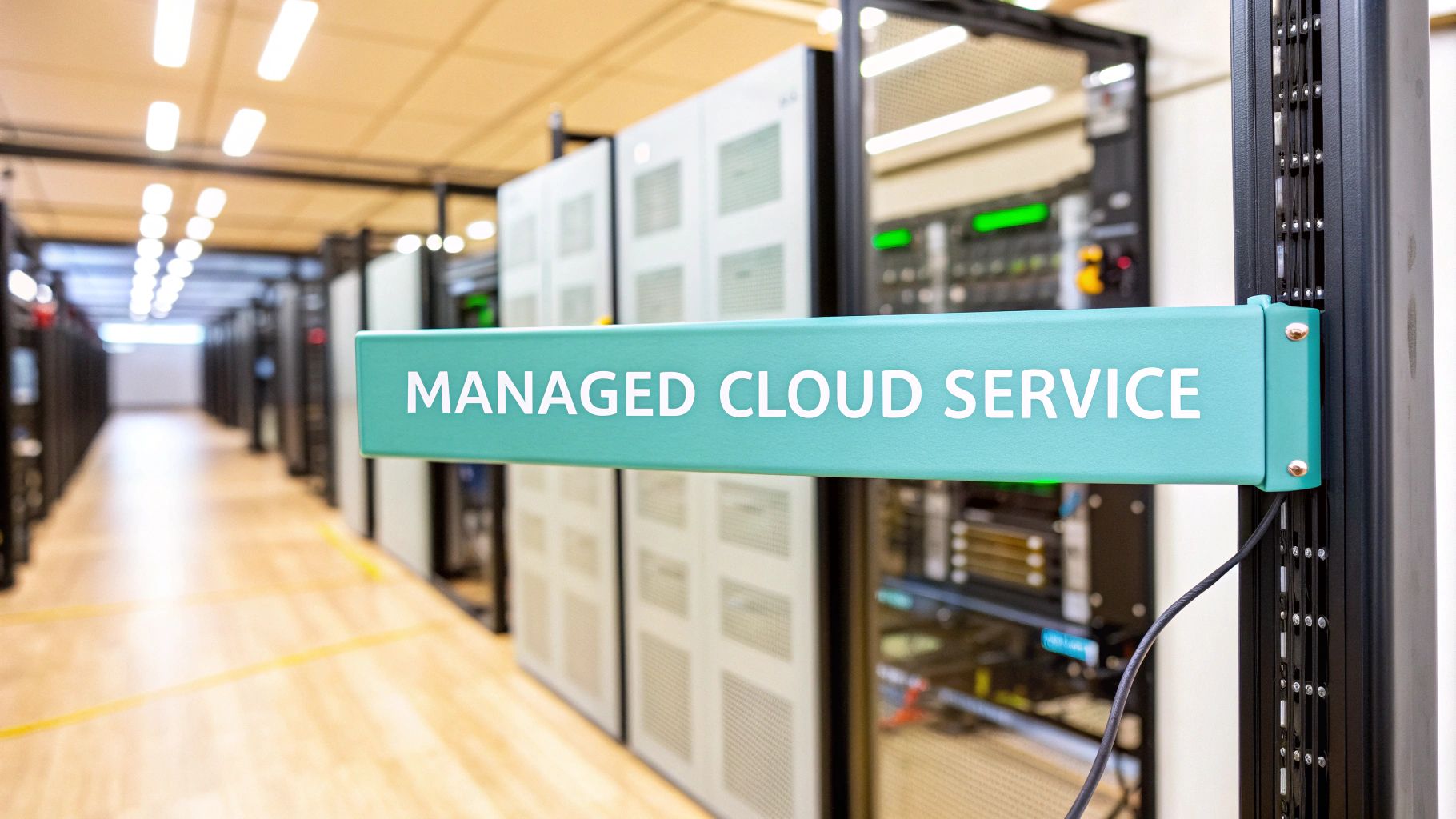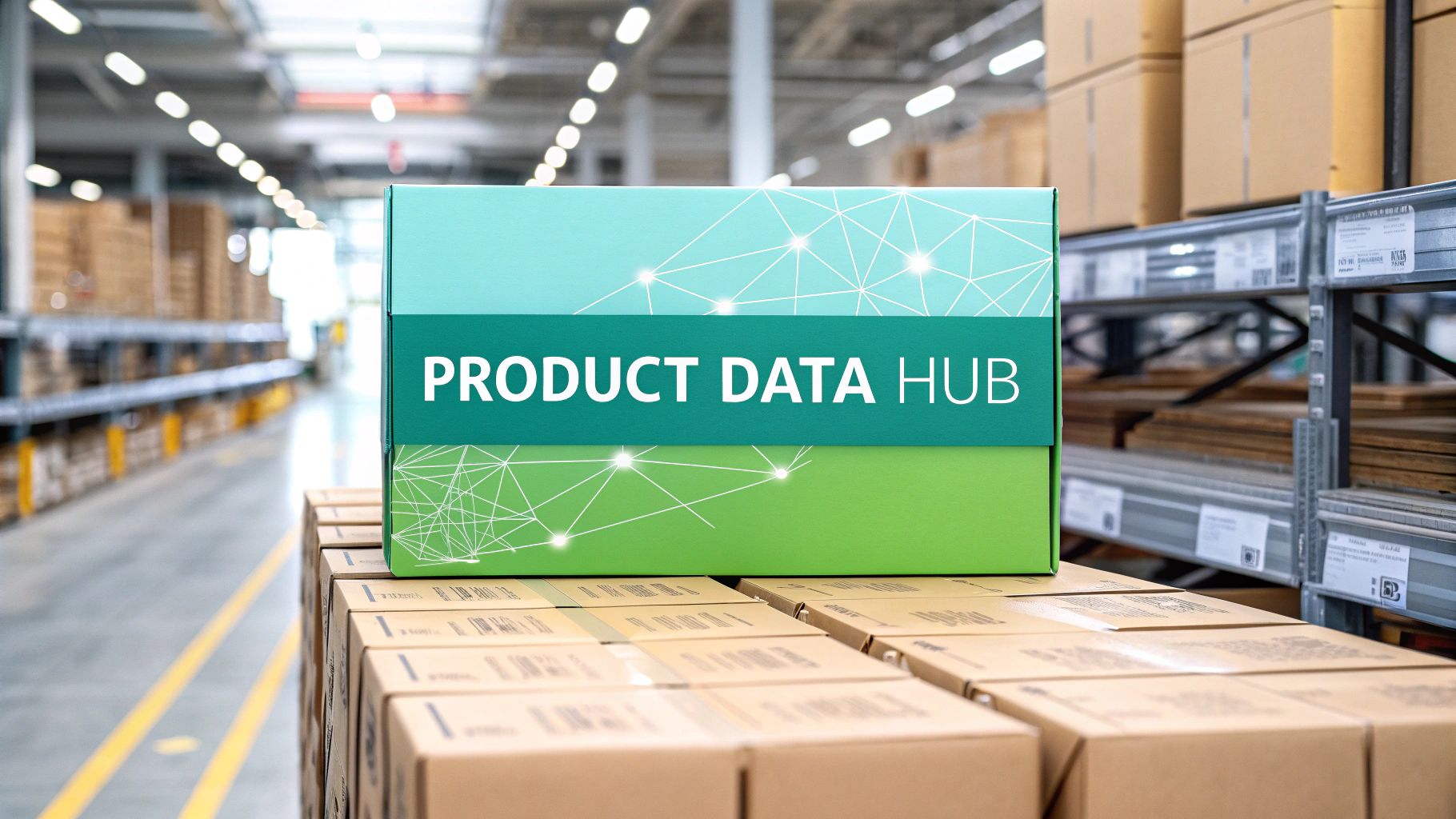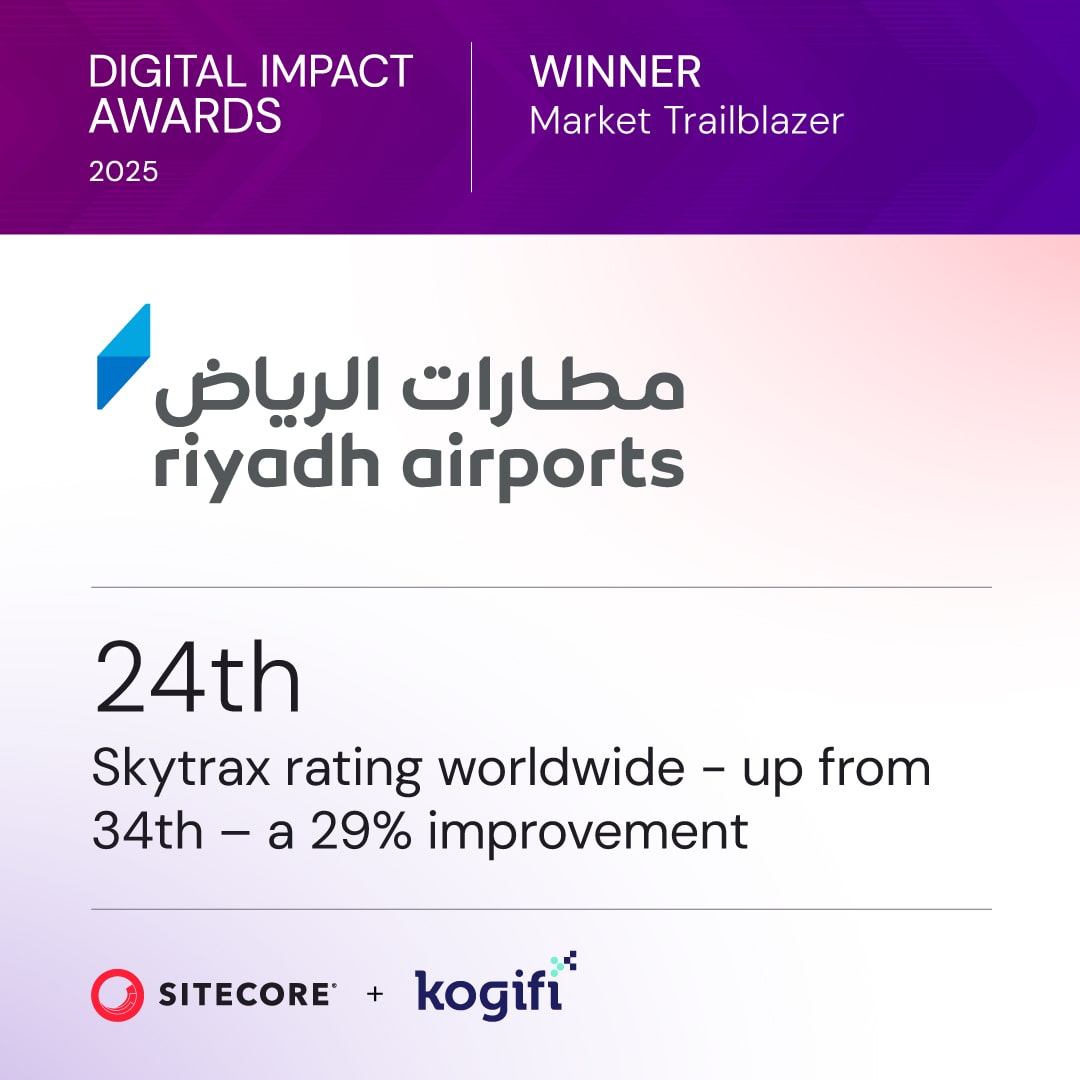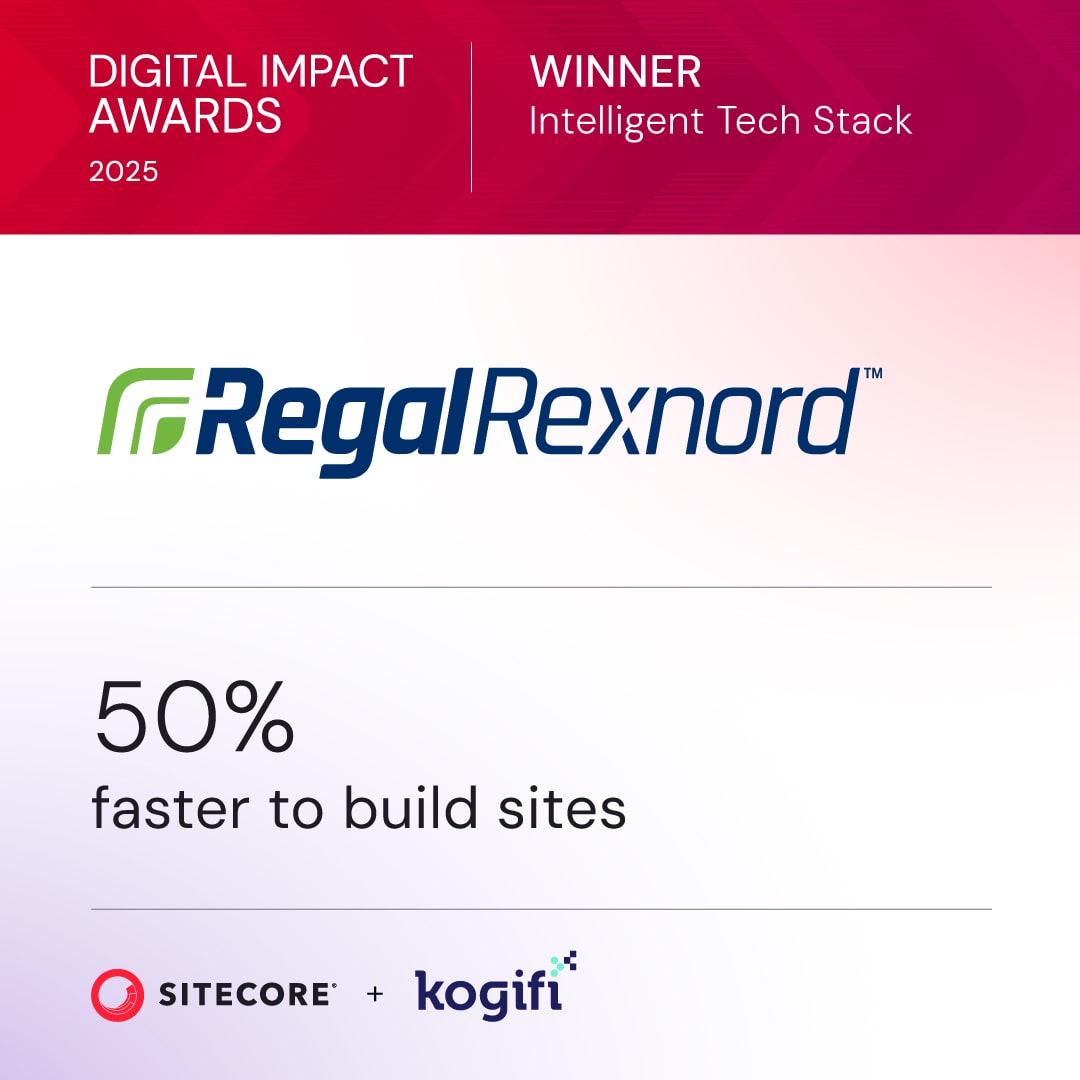To truly drive innovation in your ecommerce business, you need much more than just an online store—you need a powerful digital ecosystem built on a strategic foundation. This is all about architecting a platform where your content, sales channels, and customer data can all communicate effortlessly. A unified, composable approach, expertly delivered by Sitecore, is what lets you deliver real-time personalization and keep your brand experience consistent, no matter where a customer interacts with you.
Building Your Foundation for Ecommerce Innovation
True innovation isn't a happy accident; it's the result of a deliberate, strategic foundation that ties together every single part of the customer journey. Many businesses are held back by disconnected systems—they have one platform for content, a totally separate one for commerce, and another for customer data. This setup creates silos, making it nearly impossible to deliver the seamless, cohesive experiences that today's shoppers demand.
This is exactly where a Digital Experience Platform (DXP) becomes a game-changer. A DXP integrates these critical components into a single, powerful engine. Instead of trying to patch together disparate tools, you get to build on a unified platform that’s actually designed for agility and growth. You can dive deeper into what a DXP is in our detailed article. This integrated approach is what allows you to react instantly to market shifts and evolving customer needs.
The Role of Sitecore in Creating a Unified Ecosystem
Sitecore is particularly brilliant at creating this kind of unified foundation. Its comprehensive suite of composable products works in concert to manage the entire customer lifecycle. This means businesses can:
- Connect Content and Commerce: Seamlessly blend rich, engaging content from a headless CMS with your transactional features. Suddenly, every blog post, video, or guide becomes a contextual sales opportunity.
- Maintain Omnichannel Consistency: Deliver a consistent brand message and user experience whether a customer is shopping on their desktop, a mobile app, or even an in-store kiosk. It all feels like one brand, powered by one core engine.
- Leverage Centralized Data: Gather customer insights from every single interaction to power real-time personalization and make smarter, data-backed business decisions using Sitecore's CDP.
This level of integration is absolutely crucial in a market that's expanding so quickly. Global eCommerce sales are projected to hit a staggering $7.5 trillion in 2025, a huge leap from $5.7 trillion in 2023. This growth is fueled by the very innovations that make these seamless digital journeys possible, with 85% of global consumers now shopping online regularly. You can discover more insights about these digital commerce statistics and trends.
When you start thinking of your ecommerce platform not as a static website but as a dynamic engine for growth, everything changes. Your focus shifts from simply selling products to building lasting customer relationships. This mindset is the real first step toward enabling innovation in ecommerce.
Adopting a Composable DXP for True Agility
If you're serious about enabling real innovation in ecommerce, you have to look beyond rigid, all-in-one platforms. This is where a modern, composable DXP becomes your secret weapon. The entire Sitecore philosophy is built around freedom and flexibility, starting with a headless architecture that separates your frontend customer experience from the backend commerce engine.
That separation is exactly what gives you the room to innovate. Think about launching a new mobile app, an interactive kiosk for your brick-and-mortar stores, or even a storefront on a social media platform. With a composable setup, all of these different channels can tap into the same backend logic and commerce services. You're not stuck rebuilding your core infrastructure every time a new idea pops up. This API-first approach is the key to building a tech stack that’s ready for whatever comes next.
Weaving Together Content and Commerce
Sitecore's product suite is tailor-made for this modern, component-based world. You’ve got Sitecore XM Cloud, which acts as a pure headless CMS. It gives your content teams the power to create and manage experiences that can be pushed to any screen or device imaginable.
Then, that content seamlessly connects via APIs to a powerful commerce engine like Sitecore OrderCloud. OrderCloud was built from the ground up as a MACH-compliant platform to handle complex B2B, B2C, and B2X scenarios without being locked into a specific frontend. This powerful combination lets you pick and choose the best tools for every part of your digital ecosystem, plugging them into a central hub instead of being handcuffed by a single vendor’s limitations. For a deeper dive, our guide explains the fundamentals of what is composable commerce in much more detail.
The real advantage here is speed. When a new market opportunity appears, a composable architecture lets you build and deploy a new customer-facing experience in weeks, not months, because the underlying commerce and content functionalities are already in place and ready to be used.
The following graphic shows how this foundational flow connects your core business pillars.
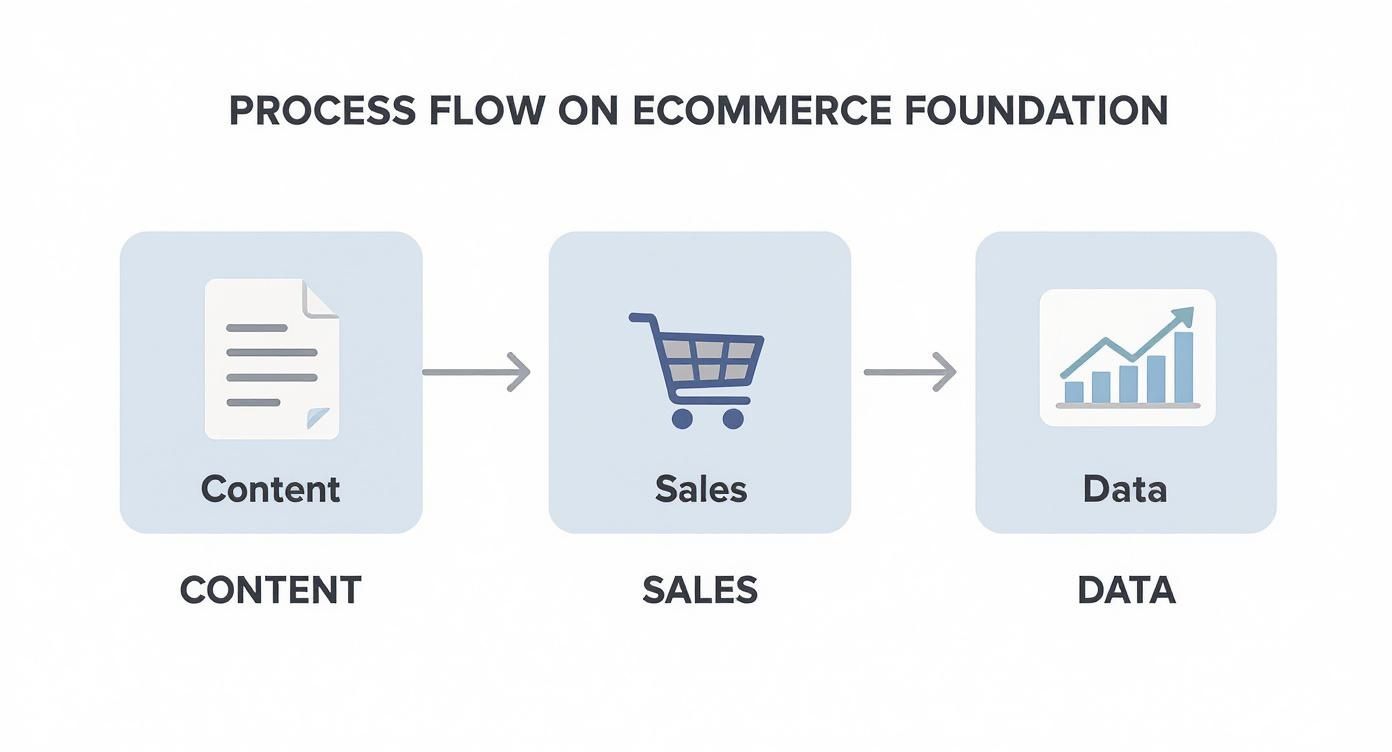
This process visualizes how independent yet interconnected systems for content, sales, and data form the backbone of a modern ecommerce strategy.
To make the difference crystal clear, let's compare the old way with the new composable approach.
Comparing Monolithic vs Composable Commerce Architectures
As you can see, the shift to a composable model isn't just a technical upgrade—it’s a strategic move that directly impacts your ability to compete and adapt.
The Role of SharePoint in Your Ecosystem
Innovation isn't just about what your customers see. How efficiently your internal teams operate is just as critical. This is where integrating a solution like SharePoint from Microsoft adds tremendous value. While Sitecore is busy managing the live digital experience, SharePoint can serve as the central repository and collaborative workspace for all your product info, marketing assets, and internal documents.
Think of it as the "single source of truth" for your internal teams. Here’s how it works in practice:
- Product Information Management (PIM): Your teams can manage detailed product specs, supplier data, and compliance documents inside SharePoint’s organized environment.
- Digital Asset Management (DAM): Marketing can store, version, and approve all campaign assets—from images to videos—before they ever get pushed into Sitecore.
- Collaborative Workflows: Content creators can draft and review materials in SharePoint, using its powerful collaboration features before anything goes live.
This integration creates a streamlined pipeline that cuts down on errors and gets your products and campaigns to market faster. By connecting SharePoint to your Sitecore DXP, you're empowering your internal teams to work smarter, which directly fuels your company's ability to innovate quickly and effectively.
Driving Personalization with AI and Customer Data

True innovation in ecommerce isn't about flashy gimmicks; it's about moving past generic marketing and treating every customer like an individual. This is where the combination of rich customer data and artificial intelligence really shines. It allows you to understand behavior, predict what someone wants next, and deliver an experience that feels like it was made just for them.
To pull this off, you need a solid system for gathering and unifying data from every single touchpoint. That’s exactly what Sitecore CDP (Customer Data Platform) is built for. It pulls information from your website, mobile app, in-store visits, and even offline channels, stitching it all together into one complete profile for each customer. This unified view is the foundation of any personalization strategy that actually works.
Activating Data with Real-Time Personalization
Once you have that 360-degree customer profile, it's time to put it to work. Enter Sitecore Personalize. It takes the rich data from Sitecore CDP and uses it to deliver unique, one-to-one interactions as they happen. We're not just talking about putting a customer's name on the homepage—this is about changing the entire experience on the fly.
Imagine a shopper is looking at hiking boots on your site. With Sitecore Personalize, you can immediately:
- Show relevant recommendations: Display complementary gear like waterproof socks or trekking poles based on what they've clicked on.
- Tailor promotional offers: If you know they're in a rainy region, you could pop up a welcome offer for 20% off waterproof apparel.
- Dynamically alter content: The next time they visit, the homepage banner could feature new arrivals in outdoor equipment instead of a generic site-wide sale.
These small, targeted actions make the shopping journey more relevant and genuinely helpful, which leads directly to better engagement and more sales. Getting these tools set up right is key, and our AI personalization in DXP implementation guide walks you through the process.
The goal is to make every interaction feel like a conversation. When a customer feels understood, they move from being a one-time buyer to a loyal advocate for your brand. That shift is the ultimate return on your investment in data and personalization technology.
Predicting Intent and Boosting Conversions
Sitecore's platform doesn't just react to what customers have already done. Its built-in AI capabilities can also predict future customer intent. By analyzing subtle browsing patterns—like hovering over a product image or repeatedly comparing two items—the system can spot shoppers who are about to leave their cart or are on the verge of buying.
This predictive insight lets you be proactive. You could trigger a timely live chat box offering help, present a limited-time free shipping offer to nudge a hesitant buyer, or even hide pop-ups for someone who is clearly focused on checking out. By anticipating their needs, you remove friction from the buying process, creating a smoother journey that builds loyalty and drives growth.
Boosting Efficiency with SharePoint Integration
To truly enable innovation in ecommerce, you need to look past the customer-facing features and start thinking about your internal operations. The market moves fast, and your product and marketing teams need to be in perfect sync. The problem? Content silos and clunky workflows often get in the way.
This is where a smart integration between a collaboration platform like SharePoint and your Sitecore DXP can give you a serious competitive edge. Many companies already have SharePoint, but very few are connecting it directly to their commerce engine. The real magic happens when you stop treating SharePoint as just a file dump and start using it as the central hub for all your pre-production content. It becomes the single source of truth before anything ever touches your live site.
Creating a Seamless Content Pipeline
Picture this: your marketing team is drafting, collaborating on, and getting approvals for a new product launch. All the assets—high-res images, video clips, product specs, and promo copy—are created and managed right inside SharePoint’s structured environment. This process nails version control and keeps everything on-brand from the start.
Once it's all approved, nobody has to manually download and re-upload a thing. A well-configured integration lets you push everything from SharePoint directly into your Sitecore media library and content tree. That connection alone can dramatically speed up your time-to-market.
This streamlined workflow pays off in a few key ways:
- Fewer Manual Errors: You can say goodbye to the copy-paste mistakes and version mix-ups that happen when you’re bouncing content between systems.
- Empowered Non-Technical Users: Your marketing and product teams can contribute content using the familiar SharePoint interface. They never have to touch the Sitecore backend, which is a big win for security.
- Built-in Brand Governance: You can set up approval workflows inside SharePoint to make sure every asset meets brand guidelines before it gets published.
This integration turns your content creation process from a messy series of disconnected steps into a smooth, automated pipeline. The efficiency boost means your team spends less time on admin grunt work and more time dreaming up the next big idea.
This is a core principle behind effective enterprise content management solutions, which are all about unifying information across an organization to get better results. By linking your internal collaboration tool with your external DXP, you build a more agile and cohesive operation. You can learn more about how enterprise content management systems work in our complete guide.
Ultimately, connecting Sitecore with SharePoint is a practical move that removes friction, enforces consistency, and empowers your teams to get innovative campaigns and products to market faster and more reliably.
Mastering Mobile and Social Commerce Experiences

Let's be honest: shopping has fundamentally changed. The mobile device isn't just a storefront anymore; for most people, it's the storefront. If you want to innovate in ecommerce, you have to deliver an absolutely killer experience on those small screens. This is precisely where a headless architecture, especially one powered by Sitecore, becomes your secret weapon.
By separating the customer-facing frontend from the backend commerce engine, Sitecore's headless setup gives you the freedom to build whatever you can imagine. You can spin up high-performance native mobile apps or lightning-fast Progressive Web Apps (PWAs) without being boxed in by old-school website templates. All your content and experiences are managed in one place, like Sitecore XM Cloud, and then pushed out via API to any channel you need.
Capitalizing on the Mobile Commerce Surge
The dominance of mobile isn’t a fleeting trend—it’s the new standard. In 2023, mobile devices were responsible for over 60% of all global ecommerce sales. That translates to a jaw-dropping $2.2 trillion. The pure convenience of smartphones, paired with the explosion of branded apps and social media integrations, is only pushing this shift further. You can dig deeper into the numbers with these global ecommerce statistics on Shopify.
This isn't a "we'll get to it later" kind of thing. Mobile optimization has to be a top priority.
A seamless mobile experience is no longer a "nice-to-have." It’s a direct reflection of your brand's commitment to meeting customers where they are. A clunky checkout or slow load times on a phone are two of the fastest ways to lose a sale.
Extending Commerce into Social Channels
Real innovation is about letting customers buy your products the second they discover them—even if that's mid-scroll in their favorite social media app. This is where a flexible commerce engine like Sitecore OrderCloud really shines. Its API-first design means you can extend buying capabilities into virtually any application or platform.
This opens up some seriously powerful new revenue streams:
- In-Feed Purchasing: Imagine customers browsing and buying your products directly from an Instagram or Facebook post without ever leaving the app. It's frictionless.
- Influencer Storefronts: You can empower your brand ambassadors to create their own curated collections that followers can shop from instantly.
- Targeted Push Notifications: Use the data from your Sitecore DXP to send personalized offers and product alerts straight to a user's device, nudging them toward repeat purchases.
By using Sitecore's composable tools, you can manage all these different mobile and social experiences from a single, unified platform. You're not just building a mobile-friendly site; you're creating a connected ecosystem that eliminates friction and paves a smooth, intuitive path from discovery to conversion, no matter where your customer is.
Future-Proofing Your Ecommerce Growth
Keeping the momentum going is about more than just tacking on new features. It’s about building a foundation that’s designed for constant evolution. Real innovation isn't about chasing every shiny new trend; it’s about creating an agile ecosystem with Sitecore that lets you adapt, test, and grow over the long haul. The end game is to shift from a static website to a dynamic engine that consistently delivers unforgettable customer experiences.
This whole process stands on the pillars we’ve been discussing: a composable DXP for agility, data-driven personalization for relevance, and streamlined operations with tools like SharePoint to make your internal teams more efficient.
When these pieces work together, they create a powerful flywheel. For example, faster content updates coming out of a slick SharePoint workflow can fuel more A/B tests in Sitecore Personalize, which in turn generates richer data for your CDP. It all feeds into itself.
Fostering a Culture of Experimentation
But let’s be real—the best tech stack in the world won't get you far without the right culture. To truly enable innovation in ecommerce, you have to build an internal mindset that embraces data and isn’t afraid to experiment.
Encourage your teams to ask tough questions, test their assumptions, and learn from what works and what doesn't. Your Sitecore platform is the perfect sandbox for this. You can rapidly test new user journeys, play with different promotional strategies, and try out new content formats without breaking a sweat.
Think of your Sitecore platform as a laboratory for growth. Every click is a data point, every campaign is an experiment, and every outcome gives you the insight you need to build something even better tomorrow.
As AI continues to change how customers find products, it's critical for e-commerce brands to stay ahead of the curve. You need to constantly refine your strategy based on performance data and keep exploring new ways of making your products visible in an AI-powered world.
This forward-thinking mindset is no longer optional. It’s predicted that around 85% of small retail stores will be selling online by 2025—a massive leap from just 45% in 2023. This explosion shows just how accessible technology has become, allowing even smaller players to compete on a much bigger stage. You can learn more about the ecommerce growth trends driving this change.
Wrapping Up: Common Questions Answered
What’s the Big Deal with Sitecore for Ecommerce Innovation?
The real magic of Sitecore is its composable, mix-and-match architecture. Think of it like building with LEGOs instead of being stuck with a pre-built model.
Unlike platforms that box you in, Sitecore lets you plug in the best tools for the job—like OrderCloud for commerce and XM Cloud for content—using APIs. This headless approach frees you up to create truly unique customer experiences on any channel you can dream of, from a mobile app to an in-store kiosk, all without having to tear down and rebuild your whole setup. That kind of agility is what fuels real innovation.
So, How Does SharePoint Play into This?
Think of SharePoint as your team's central command for content and collaboration. When you hook it up with Sitecore, you create a smooth, direct pipeline for all your product info and marketing materials.
Your teams can work together, get approvals, and manage content in the SharePoint environment they already know and use. Once everything's ready, it gets pushed live to your site. This simple connection breaks down content silos, slashes manual errors, and gives non-technical teams the power to move faster, getting your ideas to market in record time.
Is Moving to a Composable DXP a Huge Headache?
Let's be honest, it’s more of a strategic shift than a simple tech swap. You’re moving from a monolithic, all-in-one mindset to an API-first way of thinking.
The key to making it manageable is to tackle it in phases, starting by decoupling your frontend from your backend. Yes, it takes some expert planning upfront. But the payoff—speed, flexibility, and a system that’s ready for whatever comes next—is more than worth the initial complexity. It’s about setting yourself up for growth and innovation that lasts.
Ready to build an agile, innovative ecommerce foundation? Kogifi provides expert Sitecore and SharePoint implementation and support to help you unlock your digital potential. Learn more about our services at https://www.kogifi.com.























